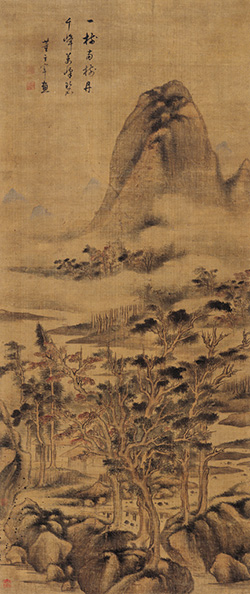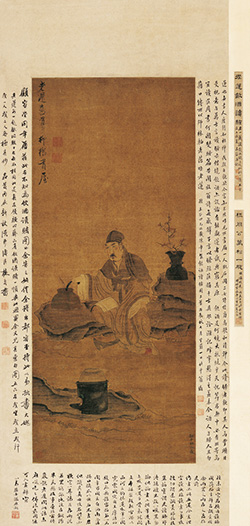The arrow of time passes none, and the history of art is one of continuous disappearance of cherished things. Of the earliest epochs, we have but a partial written record of the names and achievements of artists whose works have perished. This awareness of annihilation has been in the consciousness of literati for at least a thousand years and it has had a profound impact on their appreciation of materials and memory. With paintings, the challenge is to keep what one can, hedging the depredations of age. Silk – an otherwise durable support – yellows during a few hundred years, gradually becoming so dark that it is little more than a pool of brown haunted by faint shadows of ink twisting beneath the surface. At some mid-point in this process of disappearance the effect of age is something to make a fetish of, to be thrilled by the persistence of the thing itself – typically at at a point where the painting has already been remounted several times, surrounded by successive accretions of later material. One imagines that some artists who worked in a consciously archaic style would not be displeased by these results, by the fact that now their work has joined the very body of work they were attempting to conjure. One thinks of the glimmer of a smile the current condition of their work would bring to sophisticated and art history-savvy DONG Qichang 董其昌 (1555-1636) or CHEN Hongshou 陳洪綬 (1598-1652). | | 

DONG Qichang 董其昌 (1555-1636)
Landscape
Hanging scroll, ink and color on silk
119.5 x 51 cm
Private collection
| 

Chen Hongshou 陳洪綬 (1598-1652)
Pausing from studies to drink wine
Hanging scroll, ink and color on silk
98.5 x 41.7 cm
Private collection
|